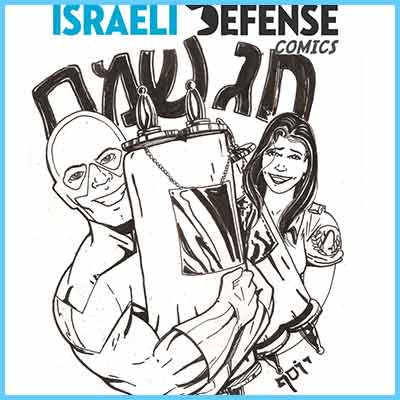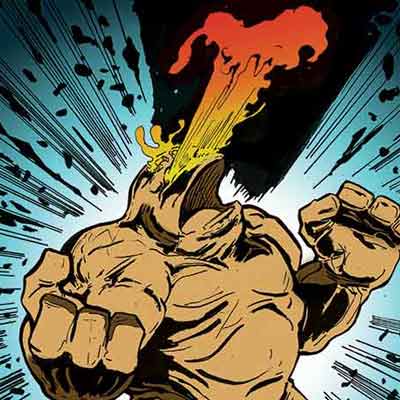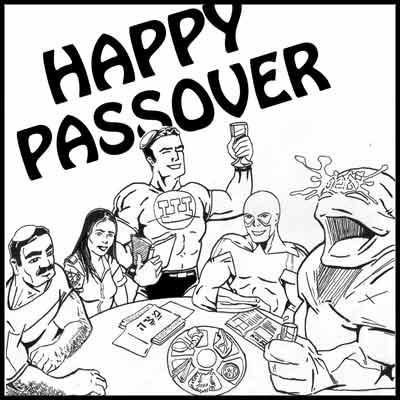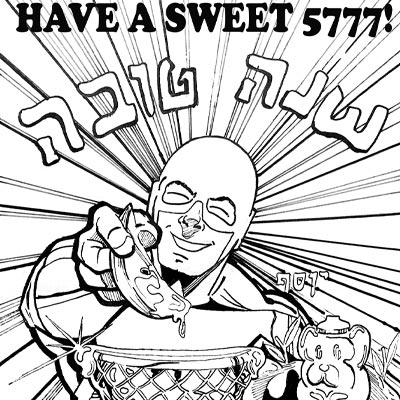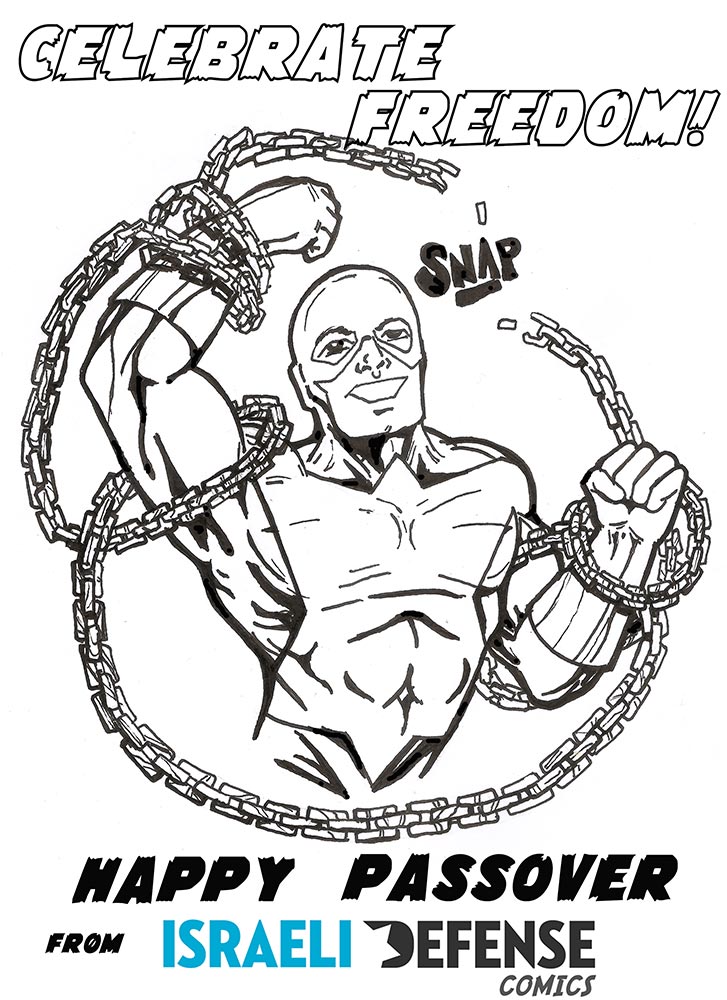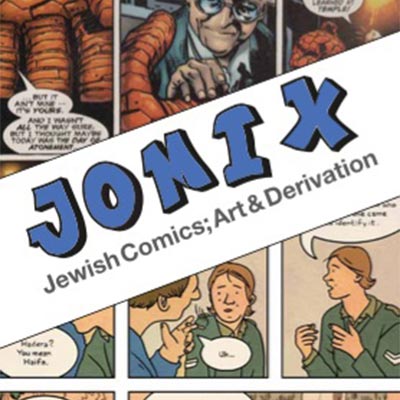
IDC is happy to participate in the third exhibition of JOMIX – Jewish Comics; Art & Derivation at the Sid Jacobson JCC at 300 Forest Dr., Greenvale, NY 11548
DATES: September 8 – December 10
OPENING RECEPTION: Sunday, Sept, 25 from 1pm-3pm
VIEWING HOURS:
Sunday: 8:00am–8:00pm
Monday-Thursday: 6:00am–10:30pm
Friday: 6:00am-5:30pm
Saturday: 1:00-8:00pm
JOMIX Exhibition includes the artwork of Joshua H. Stulman and Al Wiesner along with over 20 other Jewish artists. The exhibition features a Shaloman cover as well as the page 7 splash from Israeli Defense Comics # 02.
Below is the Press Release for the exhibition:
“About the Exhibit:
From the invention of Superman by Jerry Siegel and Joe Schuster, to current the graphic novel explosion, Jews have always served an essential and indispensable role in the comics and graphic novel industry. This exhibition documents contemporary Jewish artists creating comics and comic book inspired art. The term JOMIX refers to underground independently produced “Comix” of the 60’s and 70’s, edgy and transgressive in nature. By reinvestigating traditional genres like superhero, romance, horror, science fiction and confessionals with particular Jewish subject matter, artists are free to examine complex questions of what it means to be both a Jew and an artist in the current age.
Participating artists:
Shay Charka, Howard Chaykin, Leela Corman, Jessica Deutsch, Aliza Donath, Dorit Jordan Dotan, Josh Edelglass, Zev Engelmayer, Liana Finck, Stuart Immonen, Miriam Katin, Jack Kirby, Scott Koblish, Michael Korosty, Yonah Lavery, Miriam Libicki, Sarah Lightman, Rutu Modan, Archie Rand, Ariel Schrag, Arlen Schumer, Liat Shalom, Joel Silverstein, Dov Smiley, Joshua Stulman, Arthur Szyk, Deborah Ugoretz, Eli Valley, Julian Voloj, David Wander, Al Wiesner, Ephraim Wuensch.
Curators: Joel Silverstein, Richard McBee, Aimee Rubensteen.
This exhibition was organized by the Jewish Art Salon.
Read the Full Press Release CLICK HERE
